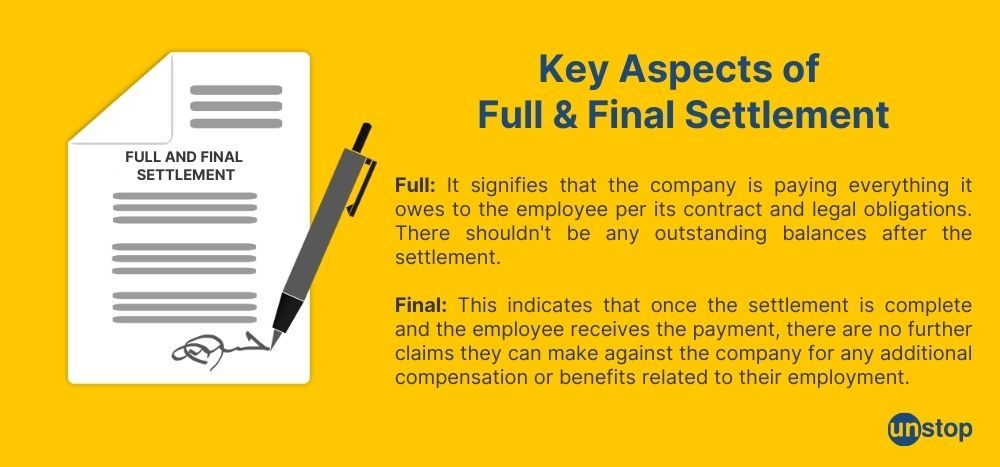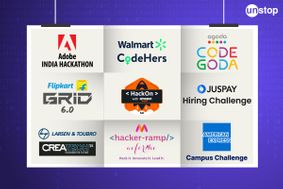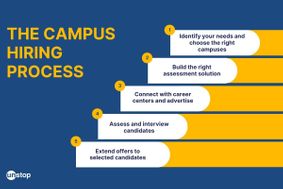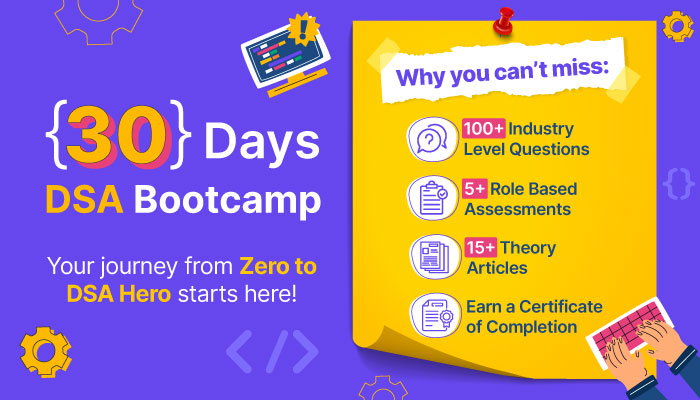- Self-Introduction For Freshers: Importance
- Components Of An Effective Self-Introduction
- How To Craft A Compelling Self-Introduction
- Self-Introduction for Freshers: Samples
- How To Highlight Your Qualifications & Experiences
- Incorporating Personal Interests & Future Plans
- Mastering Verbal & Non-verbal Communication Techniques
- Tailoring Your Introduction For Different Job Roles
- Common Mistakes To Avoid During Self-Introductions
- Conclusion
- Frequently Asked Questions (FAQs)
- Importance Of Extracurricular Activities In Resumes
- Types Of Extracurricular Activities To Include
- Best Extracurricular Activities For Different Fields
- Listing Extracurricular Activities In A Resume
- Adding Activities In The Education & Achievement Sections
- Soft Skills Gained From Extracurricular Activities
- Tailoring Activities Relevant To The Job Application
- Tips For Effective Inclusion Of Extracurricular Activities In Your Resume
- Frequently Asked Questions (FAQs)
- Importance Of Declining A Job Offer Respectfully
- Politely Decline A Job Offer With Gratitude
- Practical Tips For Declining Through Email
- Declining A Job Offer Over The Phone
- Declining After Acceptance Of Job Offer
- Salary, Timing, & Other Offers As Reasons
- Positive Relationship After Declining
- Frequently Asked Questions (FAQs)
- What is a Salary Increment?
- Factors Affecting Salary Increment
- Procedure for Salary Increment
- Formula to Calculate Salary Increment
- Formula to Calculate Salary Increment Percentage
- Benefits of Salary Increment
- How to Negotiate A Fair Salary Increment
- Importance Of Transparency In Salary Increments
- Making Better Financial Plans After Salary Increment
- Resignation After or Before Salary Increment
- Frequently Asked Questions (FAQs)
- Job Offer Acceptance Letter: Meaning & Importance
- Key Components of a Job Acceptance Letter Explained
- Job Offer Acceptance Letter Template
- Accepting a Job Offer via Email: Important Tips
- Job Offer Acceptance Letter Samples
- Composing A Job Offer Acceptance Letter: Key Tips
- Post-Acceptance Protocol
- Conclusion
- Frequently Asked Questions (FAQs)
- What is a Provisional Certificate?
- Provisional Certificate Application Process
- Sample Of A Provisional Certificate
- Benefits Of a Provisional Certificate
- Conclusion
- Frequently Asked Questions (FAQ)
- Definition Of Your Current CTC & Expected CTC
- Factors To Consider During Salary Negotiation
- Tips & Examples To Answer What Salary Do You Expect
- Understanding How Your CTC Is Calculated
- Crafting & Presenting Your Current CTC Effectively
- How To Write Current CTC & Expected CTC In Email
- Analyzing Detailed Breakdown Of Your CTC
- Conclusion
- Frequently Asked Questions (FAQs)
- Definition & Purpose Of Notice Period
- Importance Of Notice Period
- Types Of Notice Period
- Tasks & Expectation During Notice
- Notice Period Format Sample
- Other Aspects Related To Notice Period
- Conclusion
- Frequently Asked Questions (FAQs)
- Most Common Reasons for Job Change
- Current Trends Influencing Job Changes (2024-2025)
- Tips to Craft Your Best Answer for Job Change
- Conclusion
- Hard Work Vs Smart Work- Difference
- Examples Of Hard Work Vs Smart Work
- Ways To Hone Your Smart Work Skills
- Utilizing SMART Goal Approach
- Essence Of Hard Work
- Essence Of Smart Work
- Combining Benefits Of Hard & Smart Work
- Enhancing Efficiency Work Approach
- Closing Thoughts
- Frequently Asked Questions
- Defining What Is Probation Period
- Activities During The Probation Period
- Salary During The Probation Period
- Importance Of Completing The Probation Period
- Probation Period Extension Explained
- How To Successfully Complete Probation Period
- Closing Thoughts
- Frequently Asked Questions (FAQs)
- Definition & Its Origin Of Garden Leave
- What Happens To An Employee During Garden Leave?
- Advantages Of Garden Leave
- Disadvantages Of Garden Leave
- Duration Of Garden Leave & Its Impact
- Identifying Employees Suitable For Garden Leave
- Best Time To Use Garden Leaves
- When To Avoid Gardening Leave
- Consequences Of An Employee Declining Garden Leave
- Employers' Guide To Making The Most Of Garden Leave
- Rights And Obligations Under Garden Leaves
- Summary
- Frequently Asked Questions (FAQs)
- What is an Interview?
- What Do Companies Look For During An Interview?
- Types Of Interview Formats
- Types Of Interview Questions
- Interview Tips For Freshers
- Conclusion
- Frequently Asked Questions (FAQs)
- Group Discussion & Its Purpose Explained
- Importance Of Group Discussion
- Types Of Group Discussion
- Characteristics Of Group Discussion
- Skills And Success Tips Of Group Discussion
- Mistakes & Topics To Avoid In Group Discussion
- Final Remarks
- Frequently Asked Questions
- Understanding What Job Application Is
- Nitty Gritty Of Job Application
- Step-by-step Guide On How To Apply For A Job
- Effective Tips For Job Applicants
- Conclusion
- Frequently Asked Questions (FAQs)
- Significance Of Emailing Your Resume
- What To Write In An Email When Sending A Resume
- Samples Emails When Sending A Resume
- Final Remarks
- Frequently Asked Questions (FAQs)
- Decoding Dress Code For Interview
- Interview Dress Code For Men
- Interview Dress Code For Women
- Outfits To Be Avoided For A Job Interview
- Conclusion
- Frequently Asked Questions (FAQs)
- Understanding Biodata in Job Applications
- Crafting an Effective Biodata for Your Job Search
- 10 Tips for an Effective Biodata
- Biodata vs. Resume vs. CV: Understanding the Differences
- Understanding a Biodata Format (Sample Template)
- Frequently Asked Questions (FAQs)
- Creating An Appealing Resume For Job Search
- 7 Types Of Resumes For Job Application
- Tips For Crafting An Effective Resume
- Conclusion
- Frequently Asked Questions (FAQs)
- Definition Of CTC
- Understanding The Components Of CTC
- Formula To Calculate CTC
- Example Of CTC Breakdown
- Benefits Of Cost To Company
- Understanding Gross Salary And Net Salary
- Conclusion
- Frequently Asked Questions (FAQs)
- Understanding Your Ambition In Life
- How To Answer The Question During Interview
- Do’s And Don'ts While Answering The Question
- Examples Of Sample Answers
- Summary
- Frequently Asked Questions
- Definition & Purpose Of An Apology Letter
- Understanding The Basic Components
- Knowing When To Write
- Tips To Craft An Effective Apology Letter
- Mistakes To Be Avoided
- Example & Format Of An Apology Letter
- Summary
- Frequently Asked Questions
- What Is A Job & What Is Leaving A Job
- Top 10 Reasons For Leaving A Job
- How To Prepare When Planning To Leave A Job
- Tips To Explain Your Departure To Your Employer
- Sample Answers For Leaving A Job
- Conclusion
- Frequently Asked Questions (FAQs)
- Annual Income & Calculation Explained
- Formula For Annual Income Calculation
- Examples Of Annual Income Calculation
- Gross Income Vs. Net Income
- Conclusion
- Frequently Asked Questions
- Understanding What Is Severance Pay
- Importance Of Understanding Severance Pay
- Why Companies Offer Severance Pay
- Essential Components Of Severance Package
- Eligibility Conditions For Severance Packages
- Tax Implications Of Severance Pay
- Conclusion
- Frequently Asked Questions (FAQs)
- Understanding A Job Application Letter
- Format Of A Job Application Letter
- Importance Of A Well-Crafted Application Letter
- Tips For Crafting A Compelling Job Application
- Sample Letters For Various Profiles
- Conclusion
- Frequently Asked Questions (FAQs)
- Meaning Of Job Profile & Purpose
- Key Components Of A Job Profile
- Benefits Of Job Profiles For Employers
- 5 Best Tips For Crafting An Effective Job Profile
- Common Pitfalls To Avoid In Job Profile Descriptions
- Job Profile Vs Profile Summary
- Summary
- Frequently Asked Questions (FAQs)
- Understanding Full and Final Settlement
- Components of Full and Final Settlement
- Pre-Requisite to Calculating FnF
- Calculating FnF: Process and Timing
- Final Settlement Letters
- Final Remarks
- Frequently Asked Questions
- Definition Of Teamwork Skills
- Types Of Teamwork Skills
- Benefits Of Teamwork Skills
- Strategies For Improvement Of Skills
- Showcasing Teamwork Skills Effectively
- Conclusion
- Frequently Asked Questions (FAQs)
- What are the Barriers of Communication?
- Types of Barriers of Communication
- Top Barriers of Communication: The Most Common Culprits
- Strategies to Overcome Communication Barriers
- Frequently Asked Questions (FAQs)
- Definition & Factors Of Workplace Anxiety
- Recognizing Signs & Symptoms Of Anxiety
- Strategies & Tips To Handle Workplace Anxiety
- Summary
- Frequently Asked Questions (FAQs)
Full And Final Settlement: Components & Calculation (With Sample Letter)

When employees exit an organization, several responsibilities fall on both the employee and the firm. For example, employees have to submit a resignation letter, serve a notice period, etc. Meanwhile, firms are responsible for conducting exit interviews, providing full and final settlement to exiting employees, etc.
What’s a full and final settlement, and why is it important? Dive in to understand.
Understanding Full and Final Settlement
Definition
Full and final settlement (often abbreviated as FnF) refers to the process of paying all of the outstanding dues and benefits owed to an employee who is leaving a company. This typically happens when an employee resigns, retires, or is terminated.

Importance: Settling dues properly is crucial for both employers and employees. It ensures a smooth exit process and avoids any legal disputes later.
New Code on Wages: 2022 Reforms
India introduced reforms in the wage structure for salaried employees with the Code on Wages, 2019. The Code, which was introduced and notified on August 8th, 2019, came into effect partially at later dates, depending on the specific provisions. Some states are yet to finalize the rules for the execution of the code.
Per the new reforms introduced in 2022, the code on wages emphasizes the timely completion of final settlement post-employee separation. NDTV states that the new wage code under the labour law says the wages payable to an exiting employee “shall be paid within two working days” of the employee leaving the firm.
Though the code has been passed in parliament, it has yet to be ratified by state governments.
Components of Full and Final Settlement
A full and final settlement is a final payout to an employee leaving the company. It ensures all earned wages, benefits, and other dues are paid before the employee departs. Here's a breakdown of the common components of an FnF settlement:
- Unpaid Salary: This includes the base salary an employee earns for the period worked from their last pay date up to their last working day.
- Earned and Unused Leaves (Encashment): If an employee has accrued paid leave days (vacation, sick leave) that they haven't used, the company may compensate them financially for these unused days. This is called leave encashment. The specific number of days encashed and the calculation method might vary depending on the company policy and local regulations.
- Bonus or Commission Payments (if applicable): If the employee is entitled to bonuses or commissions based on their performance or sales achievements, these are also included in the FnF settlement, considering the pro-rated amount for the worked period.
- Gratuity (depending on company policy and location): Gratuity is a payment made to an employee upon retirement, resignation, or termination after completing a minimum service period (as mandated by law in some countries). The gratuity calculation can vary and might depend on factors like the employee's salary, tenure, and company policy.
- Provident Fund Contributions: Provident funds are social security schemes where both employer and employee contribute a portion of the salary. During the FnF settlement, the employer needs to pay their share of provident fund contributions along with the employee's contributions (usually deducted from their salary) to the designated provident fund account.
- Reimbursement of Outstanding Claims: If an employee has incurred any legitimate expenses on behalf of the company with prior approval (e.g., mobile phone bills, travel expenses), the company reimburses these expenses during the FnF settlement.
Additional Considerations
- Taxes: Depending on the location and company policy, taxes might be deducted from the FnF payout.
- Deductions: Companies might deduct any outstanding advances, loans, or damages from the employee's final payout.
- Settlement Agreement: In some cases, a settlement agreement outlining the terms of the separation and the FnF package might be signed by both parties.
Looking for the perfect JOB or INTERNSHIP? Explore hundreds of job roles across multiple domains on Unstop!
Pre-Requisite to Calculating FnF
Clearances
Before processing the final settlement, employees must obtain clearances from various departments. This involves securing approvals from the IT department to clear any pending dues or return company devices, the admin department for facility clearance, and the HR department for necessary documentation checks.
Importance of Returning Assets
Returning company assets like laptops, access cards, and ID cards is crucial for a smooth clearance process. Failure to return these items can delay the settlement process and create unnecessary complications.
Serving Notice Period

Serving the notice period as per employment terms is essential. It ensures a proper handover of responsibilities and projects, facilitating a seamless transition for both, the departing employee and their team.
Calculating FnF: Process and Timing
Time Frame
Companies in India typically process full and final settlements within a time frame of 45 to 60 days after the employee's last working day. This period allows for the calculation of dues and necessary paperwork.
Documentation Requirements
To facilitate a smooth process, employees should receive necessary documents like Form 16 and final payslips along with their settlement amount. These documents are crucial for tax purposes and financial planning.
Salary Calculation
Employers must calculate and pay the salary up to the employee's exit date when processing full and final settlements. This includes ensuring that all outstanding amounts, such as unpaid wages, bonuses, or benefits, are included in the final settlement amount.
Importance of Timely Settlements & Clear Communication
Ensuring prompt processing of full and final settlements is crucial for maintaining a positive employer-employee relationship. Timely payments demonstrate respect for employees' contributions and help avoid any potential legal issues arising from delayed settlements.
A transparent and well-defined FnF process ensures a smooth exit for employees and minimizes the risk of future disputes. Companies should have a clear FnF policy outlining the components, calculation methods, and timeline for settling dues.
Final Settlement Letters
Final settlement letters are documents provided by companies to employees when they are leaving the organization and receiving their final settlement, which typically includes any pending salary, benefits, bonuses, and other financial dues.
These letters serve as a formal confirmation of the agreed-upon terms and help ensure clarity and transparency in the financial settlement process between the employer and the departing employee. It outlines the details of the final payment and signifies the closure of the employment relationship.
The format of full and final settlement letters may vary among organizations. These letters need to provide a detailed breakdown of the payments made to employees.
Sample Full and Final Settlement (FnF) Document
Here’s a sample FnF document that outlines the required information, key components, etc.
Employee: [Employee Name]
Department: [Employee Department]
Date of Leaving: [Employee Last Working Day]
Reason for Leaving: [Resignation / Retirement / Termination]
This document outlines the full and final settlement of all outstanding dues and benefits owed to [Employee Name] by [Company Name] upon their departure from the company on [Employee Last Working Day].
Components of Settlement:
Unpaid Salary:
- Base Salary Earned: [Amount] (from [Start Date] to [Last Working Day])
Earned and Unused Leaves (Encashment):
- Leave Type | Encashed Days | Encashment Rate | Amount
- ------- | -------- | -------- | --------
- Vacation Leave | [Number of Days] | [Company Leave Encashment Rate] | [Total Amount]
Bonus or Commission Payments (if applicable):
- Bonus/Commission Period: [Applicable Period]
- Earned Bonus/Commission: [Amount]
Gratuity (if applicable):
Gratuity Amount: [Amount] (as per company policy and calculations)
Provident Fund Contributions:
- Employee Contribution: [Amount] (deducted from salary)
- Employer Contribution: [Amount] (company contribution)
- Total Provident Fund: [Total Amount] (paid to designated account)
Reimbursement of Outstanding Claims:
- Description of Claim: [Details of Reimbursable Expense]
- Reimbursement Amount: [Amount]
Total Full and Final Settlement Amount: [Sum of all components]
Taxes:
Taxes Deducted (if applicable): [Amount]
Net Full and Final Settlement Amount: [Total Settlement Amount - Taxes Deducted]
Payment Method:
The net settlement amount of [Net Full and Final Settlement Amount] will be paid to [Employee Name] through [Payment Method (e.g., bank transfer)] on [Payment Date].
Settlement Agreement:
[Include a statement about a settlement agreement being signed by both parties, if applicable]
Employee Acknowledgement:
By signing below, I acknowledge that I have received and reviewed this full and final settlement document and agree that it constitutes the complete settlement of all my outstanding dues and benefits from [Company Name]. I understand this settlement is final and precludes any further claims against the company.
Employee Signature: _____________________
Date: _____________
Note: This is a sample format, and the specific components and calculations may vary depending on the company's policy, location, and employee's situation.
Final Remarks
In conclusion, understanding the intricacies of full and final settlements is crucial for recruiters and HR personnel. You can ensure smooth negotiations and agreements by familiarizing yourself with the key components and processes.
Prioritizing clear communication and fair resolutions will benefit the parties involved and reflect positively on your organization. Embrace the opportunity to handle settlements efficiently and amicably, ultimately contributing to a positive work environment and successful outcomes for all parties.
Frequently Asked Questions
1. What is a full and final settlement?
A full and final settlement is the complete resolution of financial obligations between two parties, usually an employer and an employee. It typically involves clearing all dues, liabilities, and claims to conclude the relationship.
2. How does a full and final settlement benefit employees?
Full and final settlements provide employees with closure by ensuring timely payment of dues after leaving a job. This process streamlines financial matters, avoids prolonged disputes, and allows individuals to move forward with their careers smoothly.
3. What are the key components of a full and final settlement?
Key components include salary dues, bonuses, incentives, leave encashment, gratuity, provident fund contributions, any outstanding loans or advances, tax deductions, and issuance of experience or relieving letters.
4. When should one expect the processing of a full and final settlement?
The processing time for a full and final settlement varies but, ideally, should be completed within 45-60 days from the date of resignation or termination. Timely completion ensures that both parties can part ways without any lingering financial obligations.
5. Are there any financial implications associated with a full and final settlement?
Yes, there can be financial implications, such as tax deductions on various components like gratuity or other payments. Both employers and employees need to understand these implications to avoid any surprises during the settlement process.
Unlock endless job & internship opportunities!
Suggested Reads:
- Fixing Appraisal Grudges: Addressing Unhappy Employees Post-Appraisal
- Role Of HR In Building An Inclusive Workplace In The Middle East
- How To Motivate And Retain Employees Who Didn't Get Promoted
- Internal Job Posting: Meaning, Strategies, Pros & Cons
- HR For HR: Navigating Burnout And Building Resilience
I’m a reader first and a writer second, constantly diving into the world of content. If I’m not writing or reading, I like watching movies and dreaming of a life by the beach.
Login to continue reading
And access exclusive content, personalized recommendations, and career-boosting opportunities.
Subscribe
to our newsletter
Blogs you need to hog!

Organize Hackathons: The Ultimate Playbook With Past Case Studies

What is Campus Recruitment? How To Tap The Untapped Talent?

Lateral Hiring: A Complete Guide To The Process, Its Benefits, Challenges & Best Practices














Comments
Add comment